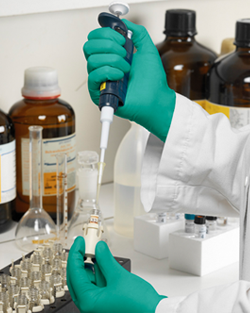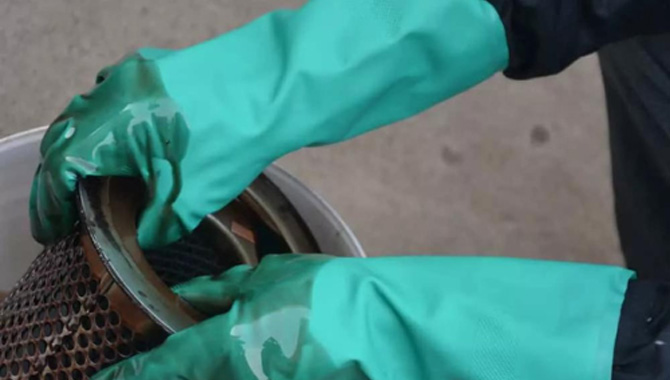 According to statistics from various sources, countless individuals suffer non-fatal injuries, making protecting one’s hands a top priority. Choosing the appropriate protective gloves is therefore crucial.
According to statistics from various sources, countless individuals suffer non-fatal injuries, making protecting one’s hands a top priority. Choosing the appropriate protective gloves is therefore crucial.
Many potential hand injuries occur in the workplace, from skin allergies to cuts and blisters, especially when handling hazardous chemicals or under extreme conditions. However, there is a way to protect oneself – by using chemical safety gloves.
Rubber, plastic, and synthetic gloves can be used to protect one’s hands when cleaning or handling oils, solvents, and other chemical agents. However, it’s essential to understand that no protective material can completely withstand chemical exposure over extended periods.
Chemicals can cause severe harm to the hands of users, making chemical protective gloves the last line of defense for protecting the skin of the hands and wrists. However, gloves also need to be comfortable, flexible, and compatible to avoid hindering work performance.
Using Chemical Gloves in the Workplace
As with any personal protective equipment, selecting the right-hand protection is essential for the conduct of your work. Assessing risks involves evaluating the hazards present in your work environment, giving you a clear view of the dangers, and helping you understand your true glove needs. This makes selecting the appropriate gloves clearer and more straightforward.
In some cases, disposable gloves are the ideal choice, but in others, more durable gloves with special properties are required.
Health and safety standards EN ISO 374 cover testing and certification standards for chemical protective gloves. These standards classify gloves based on permeation, degradation, and breakthrough time, with tested gloves often undergoing testing for up to 18 different chemicals.
Types of Chemical Safety Gloves
Safety gloves are commonly used in cleaning, laboratory, or medical environments to prevent biological hazards, chemicals, solvents, and other harmful substances. However, many gloves designed for chemical protection are made of thin synthetic materials, such as nitrile gloves, and therefore do not have puncture resistance, cut resistance, or heat resistance. It is not advisable to use these gloves in scenarios where these properties are needed.
Natural Rubber Gloves
Rubber gloves can protect hands and skin from chemical harm during household cleaning or gardening, provided the liquids are not highly corrosive. While disposable gloves are common, if reusable gloves are available, heavy-duty rubber gloves often offer good mechanical and chemical protection but are generally more expensive than regular latex gloves.
Nitrile Gloves
Nitrile gloves offer excellent chemical resistance and puncture resistance, resisting gasoline, kerosene, and other petroleum solvents. They are often used as medical gloves because this material is resistant to oils found in the human body. However, they have drawbacks, such as poor flame resistance, so they should not be used with ketones, oxidizing acids, and nitrogen-containing organic chemicals.
Chloroprene Gloves
Chloroprene rubber gloves are made from low-cost synthetic rubber and offer excellent protection against various hazardous chemicals, including acids, alcohols, oils, and inks. They have good aging resistance and can be reused due to their flexibility, sensitivity, and grip strength. They can maintain stability in oxygen environments but cannot be used with inorganic oxidizers such as concentrated nitric acid or chromic acid.
Polyvinyl Chloride (PVC) Gloves
PVC gloves are typically used in cleaning and petrochemical industries due to their low cost, durability, and cut resistance. They excel in resisting diluted oxidants such as nitric acid, chromic acid, hydrochloric acid, and phosphoric acid. Because they are aging-resistant, they can be reused. However, PVC gloves cannot be used with acetone, ketones, ether, aromatic compounds, or chlorinated solvents.
Butyl Gloves
Butyl gloves have low gas permeability, making them necessary for individuals working with special gases such as chlorine or hydrogen cyanide in chemical gas environments. In the cleaning industry, butyl gloves can also be used with acetone, methyl ethyl ketone, or similar cleaning agents. However, they are often expensive and are no。
The following is a classification of the safety of chemical gloves. If you are interested in chemical gloves, please get in touch with me.

